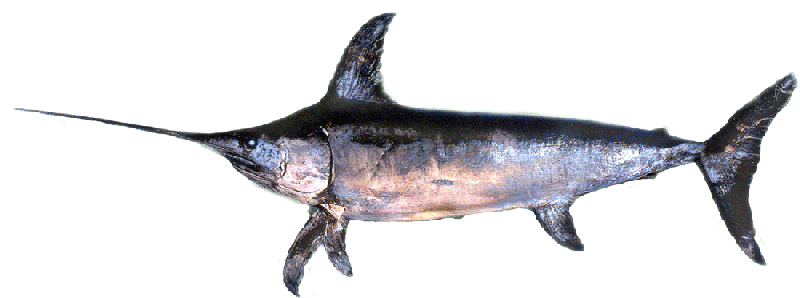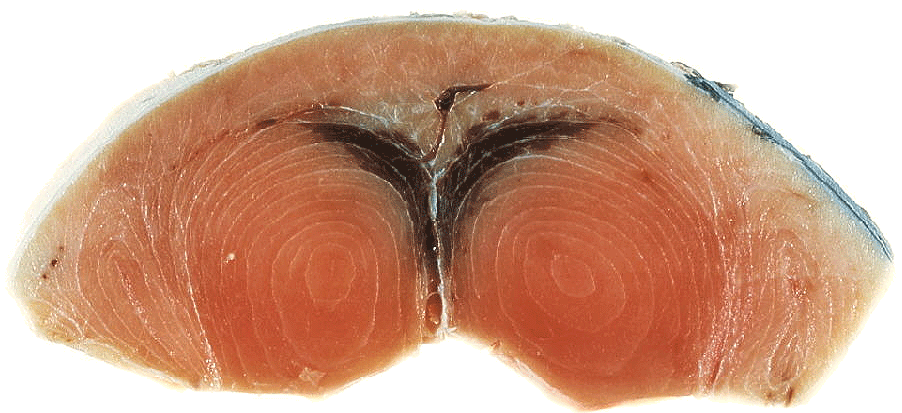|
|
|
||||||
 Swordfish (Xiphias gladius) Broadbill Swordfish, A`u ku; A`u Hawaii, Espadon French, Schwertfisch German, Pesce Spada Italian, Pez Espada Spanish, Mekajiki Japanese This fish named for its large upper jaw and snout which make up the sword and comprises up to 1/3 of the fishes body length is prized in restaurants and tables around the world. Highly migratory, the sword fish can reach a weight of 1000 pounds, but the average is 200 to 400 pounds and 10 feet long.
Swordfish are harvested in both temperate and tropical waters, In the United States they are caught off the California and New England Coast in the summer and fall, around the Hawaiian Islands, and in the Gulf of Mexico and off Florida's East Coast in the winter.
Marketers recognize price differentials for three size classes: Markers - 100-250 pounds, or more, dressed weight (known as "markers") -- this size is strongly preferred by restaurants because uniform-sized dinner portions can be cut with a minimum of offcuts and odd-sized portions -- the center sections of large loins are the premium cuts; Pups - 50-99 pounds dressed weight ("pups") -- this size is less expensive than markers and the yield of uniformly-sized portions is smaller; Rats - 25-49 pounds dressed weight ("rats") -- this size is the least expensive but is generally not used by foodservice or retail buyers who require large portions of uniform size. Ideal for grilling, swordfish is one of many species prepared as sashimi in Japan. Swordfish are known to accumulate mercury and the larger fish have proportionately more than the smaller ones. Most buyers prefer the 100 and pound size to avoid this problem. The Pacific Swordfish sometimes have a protozoan parasite with powerful digestive enzymes that can turn the meat to jelly when it is brought to room temperature. It is very important that the large belly cavity is filled with ice after gutting and bleeding to prevent the center of the fish from becoming soft or jellied. |
|||||||
|
|
|||||||

 With flesh that varies in color from
white and ivory to pink and orange, it has a firm texture, high oil
content and is moist and flavorful if not overcooked.
With flesh that varies in color from
white and ivory to pink and orange, it has a firm texture, high oil
content and is moist and flavorful if not overcooked.